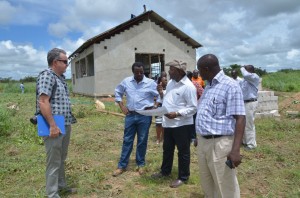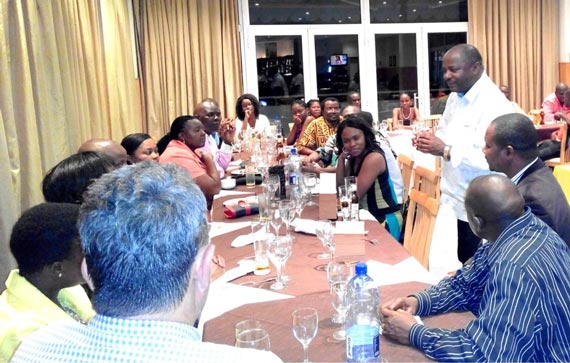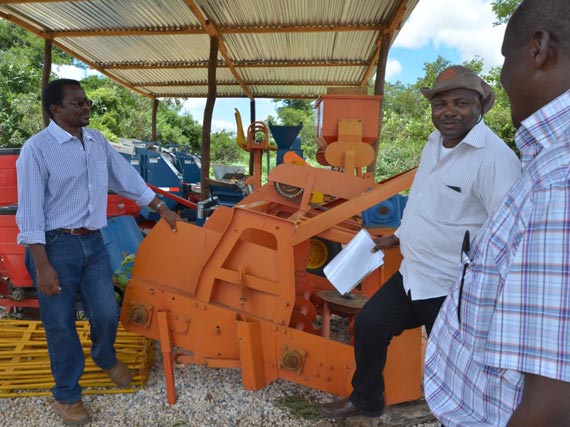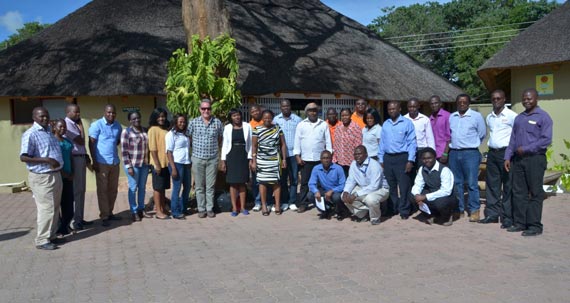Happy New Year! For the uninitiated, it is a common practice in most African countries to greet people “Happy New Year” if you see or meet a friend for the first time during the “new” year. And since this is my first blog for 2015 – and technically our first conversation – this year, let me greet you once again, “Happy new year!”
Anyway, I would like to tell you about my first visit this year to one of my favorite places on the continent – the southern Africa region! There is just something about this place – actually soothing and comforting, like a warm cup of tea on a cold day. It’s a welcome change to the fast-paced, hurried, hubbub of West Africa. That is why I always look forward to dropping by this place.
For this particular sortie to the South, I visited our stations in Nampula, Mozambique and Lusaka, Zambia.
For my first stop, I was in Nampula, Mozambique from the 26th to the 27th of January. This was very exciting for me since this was my first time in the country since I assumed office as IITA DG in 2011. And like a young boy opening presents on Christmas Day, I was thrilled to find out how the station, and more importantly its people, is doing.

DG Sanginga conferring with Dr Chikoye on progress of construction of cassava equipment fabrication facility (at background) as Mr Bishop (at left) and Dr Ntwaruhunga (right) look on
One of the main reasons I visited Nampula was to personally review and discuss plans on the establishment of our permanent research and office facilities there. You see, at the moment, IITA occupies a small office space/room in a hotel in downtown Nampula – not a very ideal place to carry out research-for-development work from, right? With me in Mozambique were David Chikoye, the Director for the Southern Africa Region; Rod Bishop, Head of our Facilities Management Services; and Jacqueline Musiimenta, Chair of our Construction Review Committee. I pulled all the stops on this one to make sure that things start rolling – and roll quickly – to finally have our own facilities established in the country soon.
I apologized to the staff about the predicament that they are in. I promised that they will have their new office within 6 months, and by golly, I will make sure that they will have their office by then.
As with all my other country visits, I always want to hear from the station staff, our “boots on the ground”, and for them to hear from me regarding developments on a broader institutional level. And as a newbie in Mozambique, I was briefed on the challenges and opportunities facing both researchers and farmers in the country and the need for IITA presence there. I was also presented with some basic information about IITA-Mozambique: we have a total of 35 staff, of which 4 are international staff and the rest are local. Nineteen are based in Nampula and the rest are scattered across four provinces which, I was told, represents the different agro-ecologies that IITA does research in.

DG Sanginga being briefed by the contractor, Mr Banda, about the main research and administrative building.
I was particularly impressed by the gender balance among the Nampula-based staff. I learned that out of the 15 national staff there, 7 are females. I am also quite fascinated by the young age (average) of staff, particularly the technicians and field staff which – I should admit – being young, outgoing, and strong are always an advantage. It is refreshing to see such young and beaming faces in the forefront of our work – something that exemplifies what I strongly believe in, of involving the youth in agriculture, but this is a topic for another blog.

The DG in a pow-wow with IITA-Mozambique staff at a dinner hosted in his honor at a hotel in Nampula
I also explained how young careers have been built at IITA, citing myself and David as examples (to the chagrin of Dr Chikoye because, I think, I actually revealed how “young” he was). Anyway, my point was that a bright future usually awaits those who stick it out with IITA.
Then on the 29th of January, I was off to Lusaka, Zambia for the second leg of my Southern sortie. As in Mozambique, my one-day trip there was mainly two-fold: see the developments of the construction of the Southern Africa Research and Administration Hub (or affectionately known as SARAH) buildings and facilities (you may refer to my other blog on the SARAH groundbreaking held in 2012), and to hold dialogue with IITA-Zambia staff.
At the moment, there are two buildings nearing completion at SARAH: the main research and administration office block, and the cassava fabrication building. Contract for a third – the cassava processing building – has just been recently awarded to a contractor and is expected to be completed within 6-8 months.
During my ocular inspection of the ongoing construction of the SARAH facilities, I was assured by the contractor that the administration and equipment fabrication buildings will be ready by the end of March, which is good because I am bringing the IITA Board of Trustees to Lusaka in May to hold our first meeting of the year there. The last thing I want to see is the Board Chair sitting in an incomplete office, which would be bad, as in really, really bad!
As Zambia is host to the southern Hub, the completion and establishment of our permanent research and administrative facilities is a top priority. Once completed, these facilities will form the backbone of our R4D service delivery efforts in the region and concretize our foothold and presence in southern Africa.
I also toured other parts of the 30-hectare SARAH campus such as the recently established cassava demo plots and the cassava and soybean planting and harvesting equipment. I told David (Chikoye) that I see a lot of potential in this place – the soil is fertile, water resources are abundant, and the people are hardworking. I also see this campus being the jump-off point for the youth-in-agriculture program in the region. I mean, what else do you need – the place has the land, the facilities, and the expertise. I can already see young people being trained here – exciting times, indeed!

Dr Chikoye, Dr Sanginga, and Dr Ntwaruhunga discussing about the cassava and soybean planting, harvesting, and processing equipment stored at the SARAH site.
After my inspection of SARAH, I held a meeting with IITA-Zambia staff. There, I briefed them about recent developments at IITA, particularly about the budget cuts being experiences across CGIAR centers. I assured them that the absolute last thing that I would do is to let go of people to cope with the cuts. For me, the strength of the institute lies neither in the buildings nor its infrastructure, but rather in its people, its human assets. However, I also reminded them that in order for IITA to stay afloat, we all need to work hand-in-hand in generating funding – work that is traditionally in the domain of scientists but we now all need to pitch in.
But probably my most important message to staff in the southern Africa region – and perhaps in all IITA hubs – is that regardless of where one is based, we should never, ever forget that we work in just one institution, members of the same family. I’ve said this once and I will say it again: we are all in one boat called IITA, and whatever we do affects this boat, and whatever happens to the boat affects us all. So keep paddling away, my friends!
‘Til next time…



No Comments